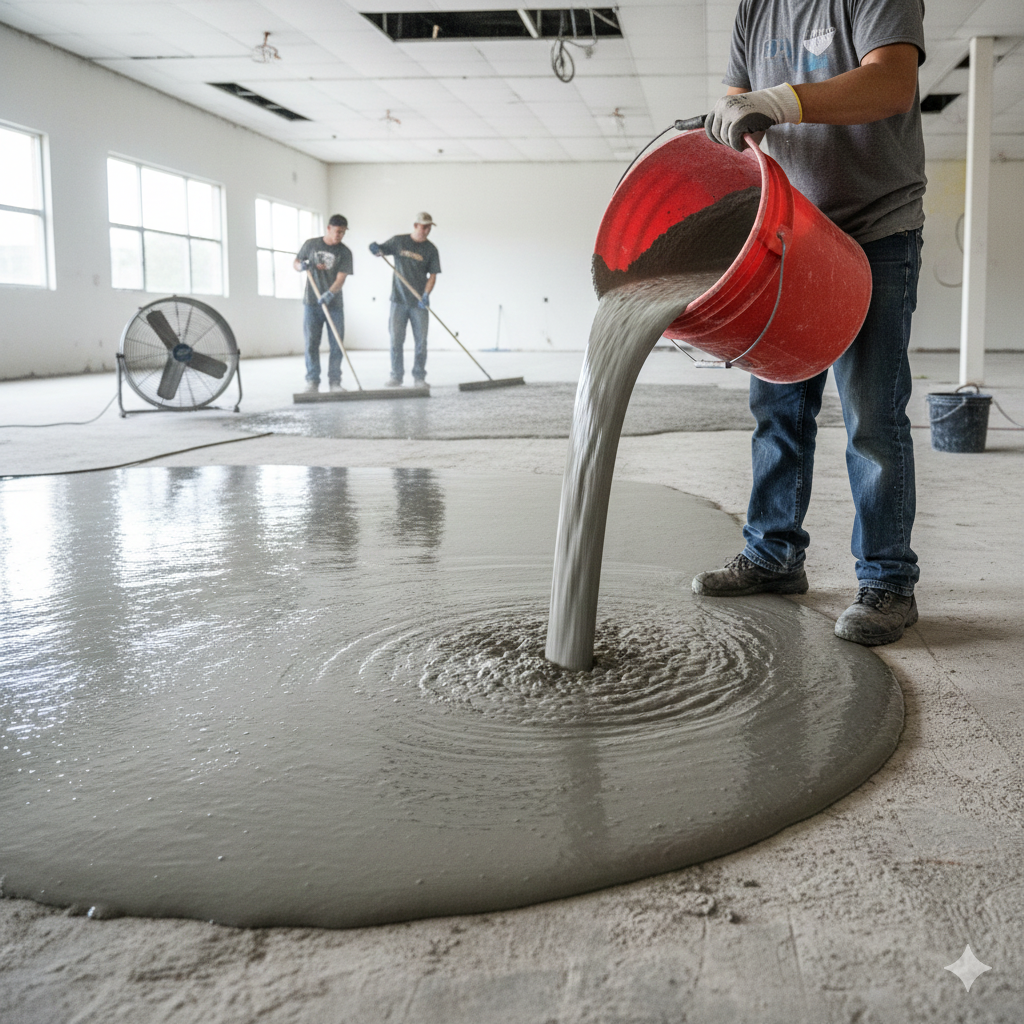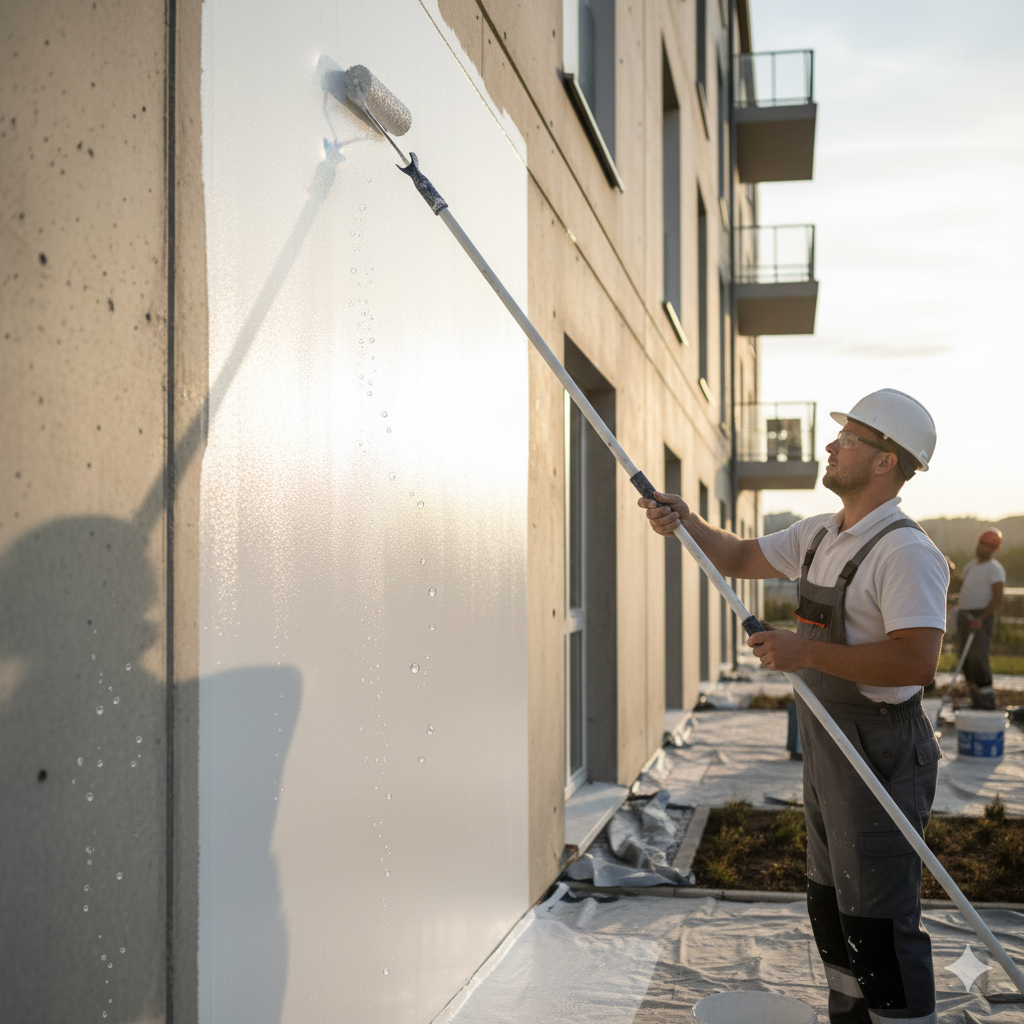
Concrete Floor Hardeners: Turning Weak Dusty Surfaces into Permanent Strength
Factories are built to endure—but floors are often their weakest point.
Heavy forklifts grind them daily, chemical spills erode the surface, and airborne dust settles into every crack.
Without protection, even a thick concrete slab starts to wear, dust, and weaken long before its designed lifespan.
That’s why concrete floor hardeners have become the invisible armor of modern facilities.
They don’t just coat the surface—they chemically transform it.
1 | The Hidden Pain of Industrial Floors
Bare concrete is strong in compression but fragile at its surface.
Under mechanical traffic, it sheds dust and develops micro pits.
This creates operational and safety problems that multiply over time:
-
Airborne dust contamination — affecting machinery, paint lines, and product packaging.
-
Surface erosion — leading to uneven forklift paths and trip hazards.
-
Chemical absorption — oils and cleaning agents penetrate pores and stain permanently.
-
Maintenance cost escalation — requiring frequent re-polishing or recoating.
The issue isn’t in the structure—it’s on the top 2 millimeters of it.
That’s where a chemical hardener works its quiet magic.
2 | The Science: How Concrete Hardener Works
Concrete is a mix of cement paste, sand, and aggregates. When it cures, microscopic pores remain—tiny channels that weaken the surface.
A concrete hardener is typically lithium, sodium, or potassium silicate that reacts with free lime (Ca(OH)₂) in concrete to form calcium silicate hydrate (C-S-H) crystals.
These crystals fill the pores, making the floor denser, harder, and dust-free.
| Component | Reaction Result | Effect on Surface |
|---|---|---|
| Silicate compound | Forms C-S-H gel | Strengthens matrix |
| Polymer modifiers | Improves penetration | Increases bonding |
| Nano-particles | Seal micro-pores | Enhance gloss & abrasion resistance |
| Curing aids | Slow evaporation | Prevents cracking |
After treatment, the surface becomes part of the concrete itself—not a coating that peels or fades.
3 | Comparing Hardener Systems
| Type | Main Compound | Advantages | Recommended Use |
|---|---|---|---|
| Sodium Silicate | Traditional base | Cost-effective, easy to apply | Low-traffic or storage areas |
| Potassium Silicate | Finer reaction, deeper penetration | Higher gloss, better chemical resistance | Commercial floors |
| Lithium Silicate | Low viscosity, high reactivity | Fast curing, minimal efflorescence | Industrial and high-traffic areas |
| Hybrid Polymer Silicate | Mixed system with resin binder | High abrasion resistance, sheen finish | Warehouses, showrooms |
Among them, lithium-based hardeners have become the global standard for export markets due to high reactivity and non-yellowing performance.
4 | Inside YUNYAN’s Export-Grade Hardener Manufacturing
Behind every drum of YUNYAN concrete floor hardener lies a chain of process control designed for international performance standards:
1️⃣ Raw Material Selection — silicates with >99% purity ensure consistent C-S-H formation.
2️⃣ Nano Dispersion — uniform particle distribution improves penetration depth.
3️⃣ pH Balancing & Stabilization — prevents surface whitening or streaks after application.
4️⃣ Performance Testing — abrasion resistance per ASTM C779, hardness via MOHS ≥ 8, and gloss retention after 1000 cycles.
5️⃣ Environmental Compliance — all exports meet VOC < 50 g/L, compliant with LEED requirements.
By the time it leaves the factory, each batch is traceable, lab-tested, and certified for export logistics.
5 | Application Process: Step-by-Step Perfection
Applying a floor hardener isn’t complicated—but precision is everything.
| Step | Process | Key Detail |
|---|---|---|
| 1 | Surface cleaning | Remove dust, oil, and laitance |
| 2 | Apply hardener (spray/roller) | Spread evenly, keep surface moist for 30 min |
| 3 | Reactivation | Light brushing to enhance penetration |
| 4 | Rinse or polish | Remove residue, allow curing for 24 hrs |
| 5 | Optional polishing | Achieve mirror gloss (Ra < 0.5 μm) |
Curing Note: Ideal temperature 10–30°C; avoid direct sunlight for 12 hours post-application.
Improper curing is the top reason 70% of hardener applications fail to reach design strength.
6 | Real-World Results: From Warehouses to Airports
| Project Type | Problem | Hardener Type | Outcome |
|---|---|---|---|
| Logistics Warehouse | Dust and tire abrasion | Lithium silicate | 40% less dust, glossy finish |
| Food Factory | Cleaning chemical corrosion | Polymer hybrid | Zero peeling, easy wash-down |
| Airport Hangar | Heavy wheel load impact | Lithium + PU topcoat | Compressive strength > 80 MPa |
| Retail Mall | Foot traffic gloss wear | Potassium silicate | Long-term shine retention |
After treatment, surface hardness increases by up to 40%, reducing maintenance costs and downtime across its service life.
7 | Common Mistakes to Avoid
Even the best material fails if misused:
-
Over-saturation causes surface whitening.
-
Applying on sealed concrete blocks reaction.
-
No cleaning after reaction leaves salt residue.
-
Using incompatible topcoats reduces gloss retention.
-
Skipping testing on old concrete may result in uneven absorption.
To ensure performance, YUNYAN provides an on-site technical guide for partners and contractors—especially valuable for export projects with varying climates.
8 | Sustainability and Long-Term Value
Unlike coatings that require recoating every few years, hardeners permanently modify the concrete surface.
They generate zero microplastic waste, emit negligible VOCs, and reduce long-term maintenance chemicals.
This makes them ideal for LEED-certified buildings, where material sustainability is not optional—it’s required.
YUNYAN’s lithium-based series achieves both durability and eco-safety, merging structural engineering with environmental responsibility.
A Surface That Stays Harder, Cleaner, and Stronger
Concrete is the foundation of every industry—but it’s the surface that endures the daily fight.
A high-quality concrete hardener is more than a product; it’s an investment in permanence.
To explore full specifications, export documents, or OEM cooperation, visit the YUNYAN official website.
For expert consultation or bulk inquiries, reach our technical support team via contact page—and turn every dusty floor into enduring strength.





